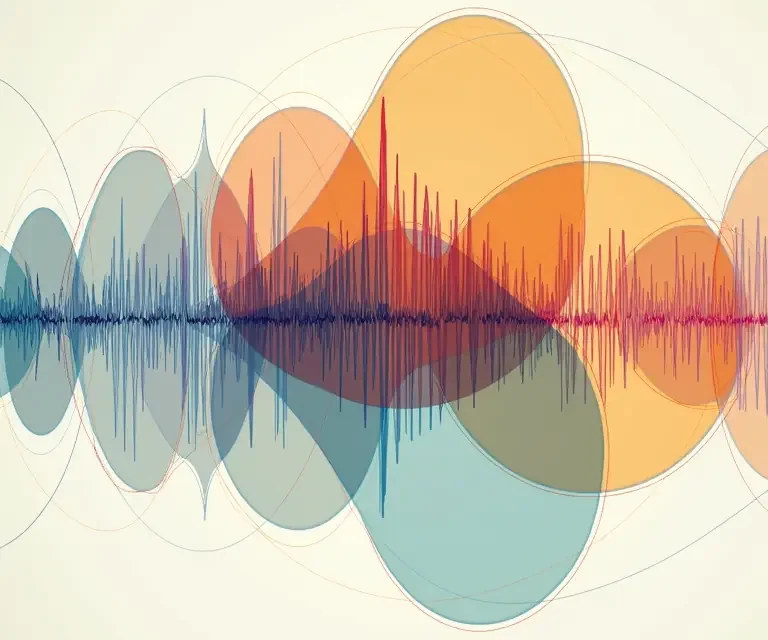Music, at its core, isn’t just about artistic expression; it’s a deeply mathematical pursuit. From the precise shaping of a violin to the lengths of air columns within a flute, the sounds we perceive as beautiful and harmonious are governed by consistent, predictable ratios and physical laws. This article will delve into the fascinating world of musical instrument tuning, exploring the harmonics, ratios, and the elusive phenomenon of perfect pitch that underpin the melodies we love. We’ll uncover how ancient mathematicians first identified these principles and how they continue to influence modern music today.
The Foundations: Harmonics and the Overtone Series
When a musical note is played on any instrument, it’s rarely a single, pure tone. Instead, it’s a complex sound composed of a fundamental frequency (the note we perceive) and a series of higher frequencies called harmonics, or overtones. These harmonics are whole-number multiples of the fundamental frequency. For example, if the fundamental frequency is 100 Hz, the harmonics will be 200 Hz, 300 Hz, 400 Hz, and so on.
Think of striking a guitar string. The string vibrates not just as a whole, but also in halves, thirds, quarters, and so on. Each of these vibrational modes produces a harmonic. The relative strength of these harmonics is what gives each instrument its unique timbre – the characteristic that allows us to distinguish a violin from a piano even when they’re playing the same note. A bright, clear sound will have many prominent higher harmonics, while a mellow sound will have fewer, with the fundamental frequency being more dominant.
The Discovery of Musical Ratios: Pythagoras and Beyond
The earliest documented exploration of the mathematical relationships in music comes from the ancient Greek mathematician Pythagoras (around 570–495 BCE). Pythagoras, through experimentation with stretched strings, discovered that pleasing musical intervals are produced when the lengths of the strings are in simple whole-number ratios.
He found that if a string’s length is halved (a ratio of 1:2), the resulting note is an octave higher. This is a particularly consonant, or pleasing, interval. A ratio of 2:3 produces a perfect fifth, and a ratio of 3:4 produces a perfect fourth. These intervals were considered fundamental building blocks of musical harmony. These discoveries weren’t accidental; Pythagoras believed that the universe itself was governed by mathematical order, and music was a reflection of that cosmic order.
It’s crucial to note that Pythagoras was working with ratios of frequencies, not absolute frequencies. This means the actual frequencies produced depend on the tension and thickness of the string, or the length and shape of the air column in a wind instrument. The relationship between the frequencies, however, remains constant for a given interval.
The Equal Temperament Revolution
While Pythagorean tuning, based on simple ratios, works well for certain intervals, it has limitations. If you repeatedly apply the perfect fifth ratio (3:2), you eventually don’t return to the original note, creating a slight dissonance. This is known as the Pythagorean comma. To overcome this limitation, musicians and mathematicians developed systems of tuning that allowed for playing in all keys without significant dissonance.
The most widely used system today is called equal temperament. In equal temperament, the octave is divided into 12 equal semitones. This means that the frequency ratio between any two adjacent semitones is the twelfth root of two (approximately 1.05946). While this ratio isn’t a simple whole-number ratio like those discovered by Pythagoras, it allows for seamless transitions between keys. The trade-off is that all intervals, except the octave, are slightly out of tune compared to the pure ratios of Pythagorean tuning. However, this slight imperfection is considered acceptable for the versatility it provides.

You can explore other historical tuning systems, like Just Intonation, which aims to maintain the pure ratios of the harmonic series, but often limits the keys in which music can be easily played. Each system presents its own advantages and disadvantages.
Tuning Specific Instruments: A Practical Look
String Instruments
Tuning string instruments, like guitars, violins, and pianos, involves adjusting the tension of the strings to achieve the desired frequencies. Guitar tuners, for instance, are designed to help musicians reach the standard tuning (E2, A2, D3, G3, B3, E4). This is typically achieved by tightening or loosening the tuning pegs. The length of the vibrating portion of the string is determined by the frets (on a guitar) or the fingerboard (on a violin).
Pianos are more complex, with over 200 strings, each requiring individual tuning. Piano tuners use a combination of experience, ear training, and specialized tools to ensure that all strings are accurately tuned to equal temperament. They often use a tuning fork to establish a reference pitch (usually A4 = 440 Hz) and then tune the other strings relative to that reference.
Wind Instruments
Wind instruments, such as flutes, clarinets, and trumpets, rely on the length and shape of the air column to determine the pitch. In a flute, changing the length of the air column (by opening or closing holes) alters the fundamental frequency. In a trumpet, the player uses valves to change the length of the tubing, thus changing the pitch.
The bore (the internal shape of the instrument) also plays a crucial role. Different bore shapes produce different harmonic characteristics, contributing to the instrument’s unique sound. Like string instruments, wind instruments are generally tuned to equal temperament.
Percussion Instruments
Tuning percussion instruments is often more complex. Timpani, for example, have adjustable tension rods that allow the player to change the pitch of the drumhead. Xylophones and marimbas are tuned by adjusting the length of the bars. The mathematical principles are similar to string instruments, as the frequency of vibration is related to the tension, length, and mass of the vibrating element. However, the harmonic series in percussion instruments can be more complex and less predictable due to the shape and material of the instrument.
The Enigma of Perfect Pitch
Perfect pitch, also known as absolute pitch, is the rare ability to identify or recreate a musical note without any external reference. Unlike relative pitch, which most musicians develop through training, perfect pitch seems to be largely innate. Individuals with perfect pitch can instantly name a note played on any instrument, or sing a specific pitch on demand.

The neurological basis of perfect pitch is still being investigated, but research suggests that it may involve differences in brain structure and function, particularly in areas related to auditory processing and memory. Early musical training, particularly before the age of six, appears to be a crucial factor in developing perfect pitch, but it’s not sufficient on its own. Genetic predisposition also seems to play a role.
It’s important to note that having perfect pitch isn’t necessarily an advantage for all musicians. While it can be useful in certain contexts, such as transcribing music or tuning instruments, it can also be distracting or even detrimental in situations where music is intentionally dissonant or atonal.
The Mathematics of Scales and Chords
Scales and chords, the building blocks of most Western music, are also based on mathematical relationships. A major scale, for example, is constructed using a specific pattern of whole and half steps, derived from the harmonic series. The intervals within a chord – major, minor, augmented, diminished – are defined by precise frequency ratios.
Understanding these mathematical relationships can provide a deeper appreciation for the structure and harmony of music. Music theory is, in essence, a system for codifying and analyzing these mathematical patterns.
The Ongoing Exploration: Microtonal Music and Beyond
While equal temperament has been the dominant tuning system for centuries, some composers and musicians are exploring alternative tuning systems, such as microtonal music, which uses intervals smaller than a semitone. This allows for a wider range of expressive possibilities, but also presents challenges for performers and listeners accustomed to equal temperament.
The pursuit of new and innovative tuning systems demonstrates that the mathematical exploration of music is an ongoing process. As our understanding of acoustics and psychoacoustics (the study of how we perceive sound) deepens, we may discover even more sophisticated ways to create and experience music.
If you’re interested in learning more about music theory, check out this helpful video:
Conclusion
The world of musical instrument tuning is a testament to the power of mathematics to unlock the secrets of beauty and harmony. From the ancient discoveries of Pythagoras to the modern complexities of equal temperament and beyond, the consistent mathematical principles underlying music continue to inspire and challenge musicians, mathematicians, and anyone who appreciates the profound connection between sound and numbers. Whether you’re a seasoned musician or simply a lover of music, understanding these principles can deepen your appreciation for the art form and reveal a hidden layer of order within the seemingly chaotic world of sound.
Want to learn more about consistent patterns in seemingly disparate fields? Check out these articles:


 The Surprisingly Consistent Geometry of Traditional Origami: Beyond Folds, A History of Mathematical Precision
The Surprisingly Consistent Geometry of Traditional Origami: Beyond Folds, A History of Mathematical Precision  The Curious Math Behind Ancient Building Proportions – Harmony in Stone & Structure
The Curious Math Behind Ancient Building Proportions – Harmony in Stone & Structure  The Surprisingly Consistent Patterns in Traditional Folk Music Scales
The Surprisingly Consistent Patterns in Traditional Folk Music Scales  The Surprisingly Consistent Math Behind Musical Harmony
The Surprisingly Consistent Math Behind Musical Harmony  The Geometry of Everyday Objects: Hidden Math All Around Us
The Geometry of Everyday Objects: Hidden Math All Around Us